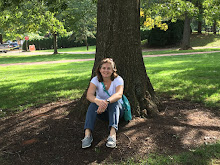Here are the original ideas...
Start simple
Work on things that you like
If you have no clue what to do, fiddle around
Don't be afraid to experiment
Find a friend to work with, share ideas!
It’s OK to copy stuff (to give you an idea)
Keep your ideas in a sketch book
Build, take apart, rebuild
Lots of things can go wrong, stick with it
(Resnick, M, 2007)
And here are our new suggestions...
(You may notice some redundant themes but with different wording - another good example of remixing!)
Just change their idea if you copy
Tops!
Put things together and see what they make
Turn a mistake into a piece of art
Keep working
Don't give up
Let go
Remember that if you sew it will shrink if you turn it inside out
Always do your best, no matter what happens
Use your creativity and your brain
If you mess up make it better
A mess up can become a masterpiece
Experiment like me!
Use as many different ideas as you can
Don't complain if there is a mistake
Be confident
Don't do the same thing all the time (written in two colors for emphasis)
Start small
Be art smart
One of my favorite things that happened with this list was one day when a child asked if she could put a dot next to one of the hand-written ideas. Of course! But no one had done this - the question and then this new opportunity brought a flurry of activity back to the wall and others in other classes noticed and added more dots too over the course of the week.
